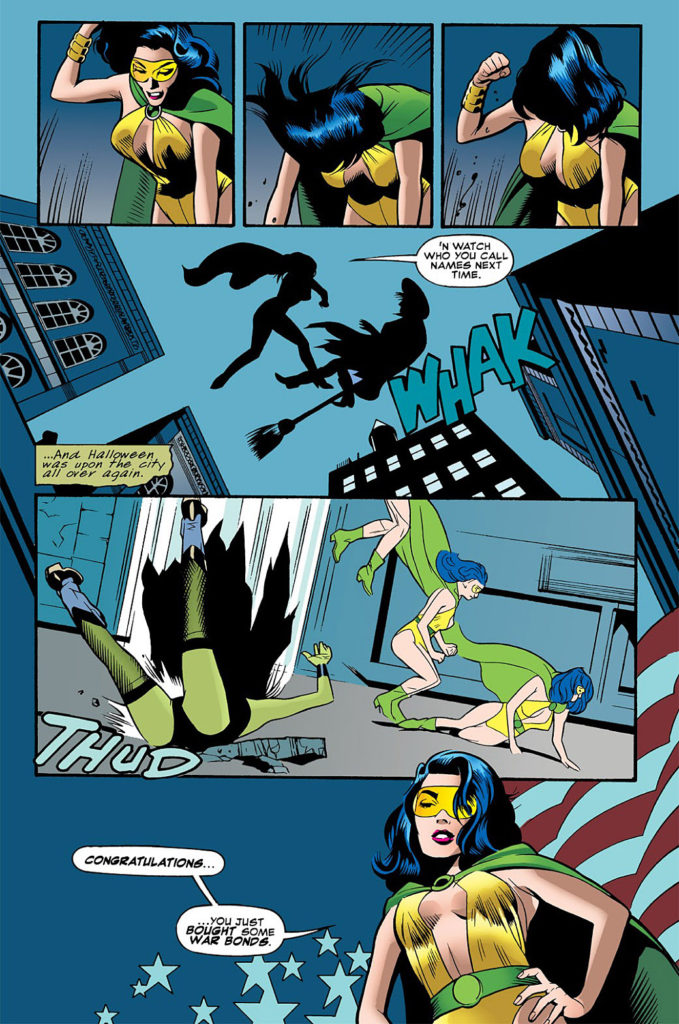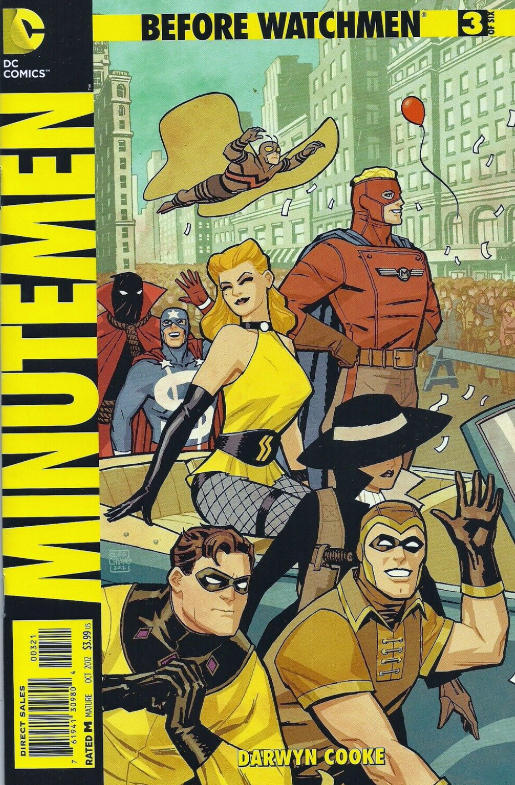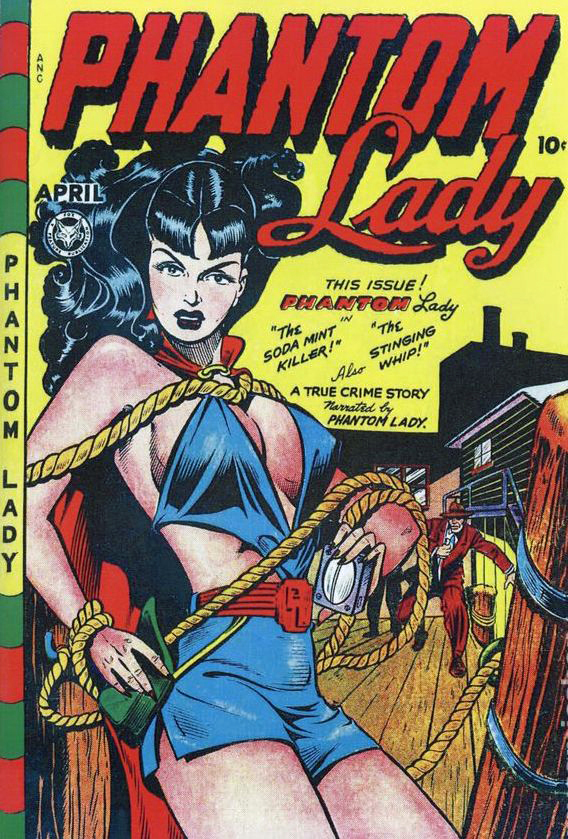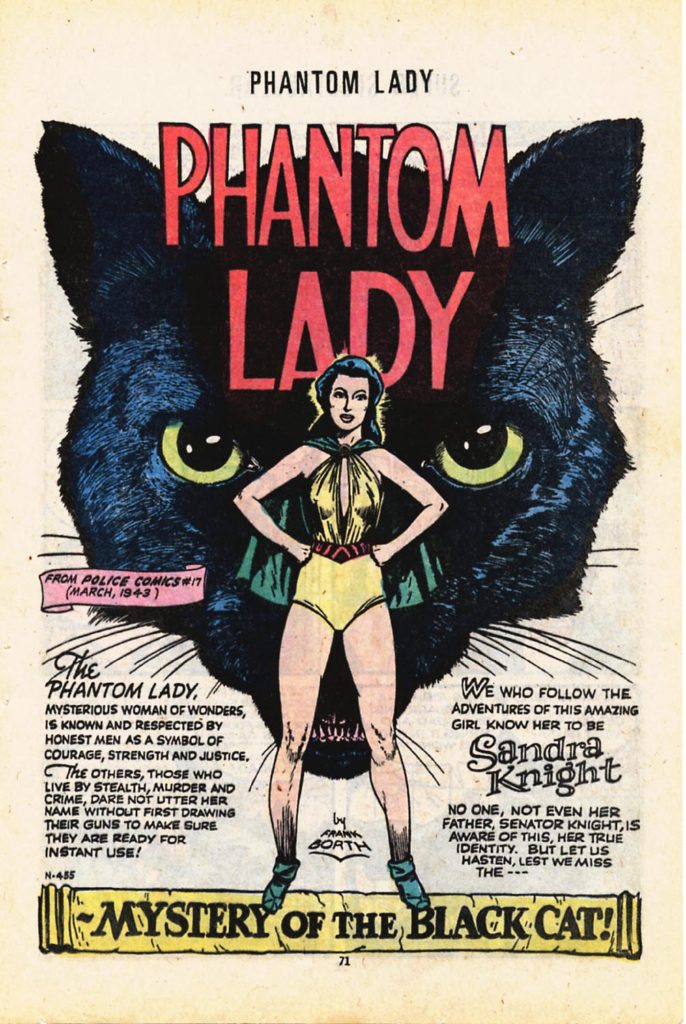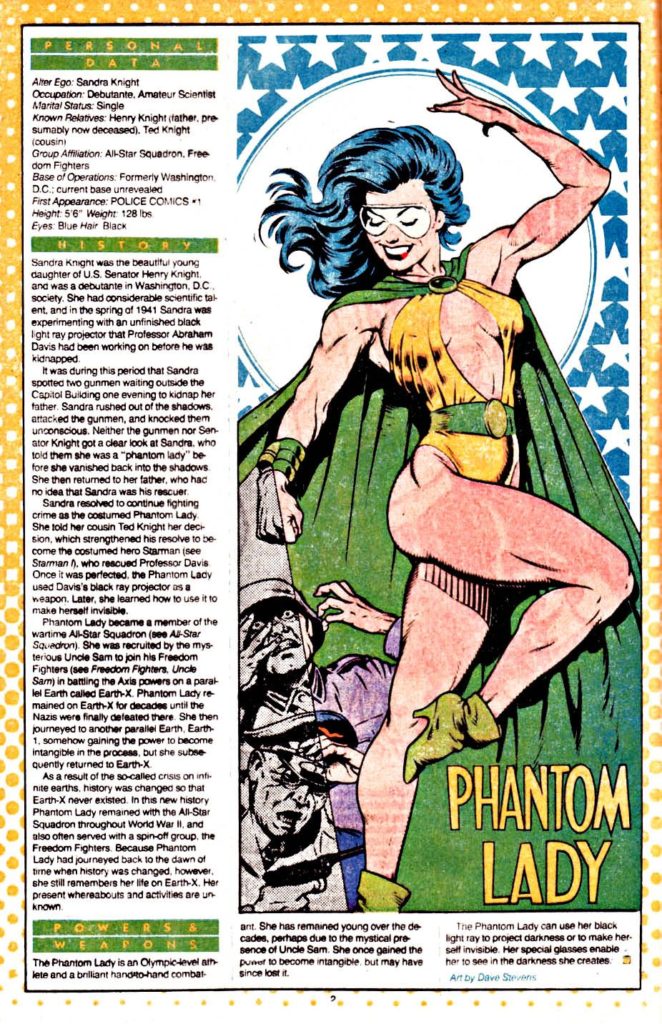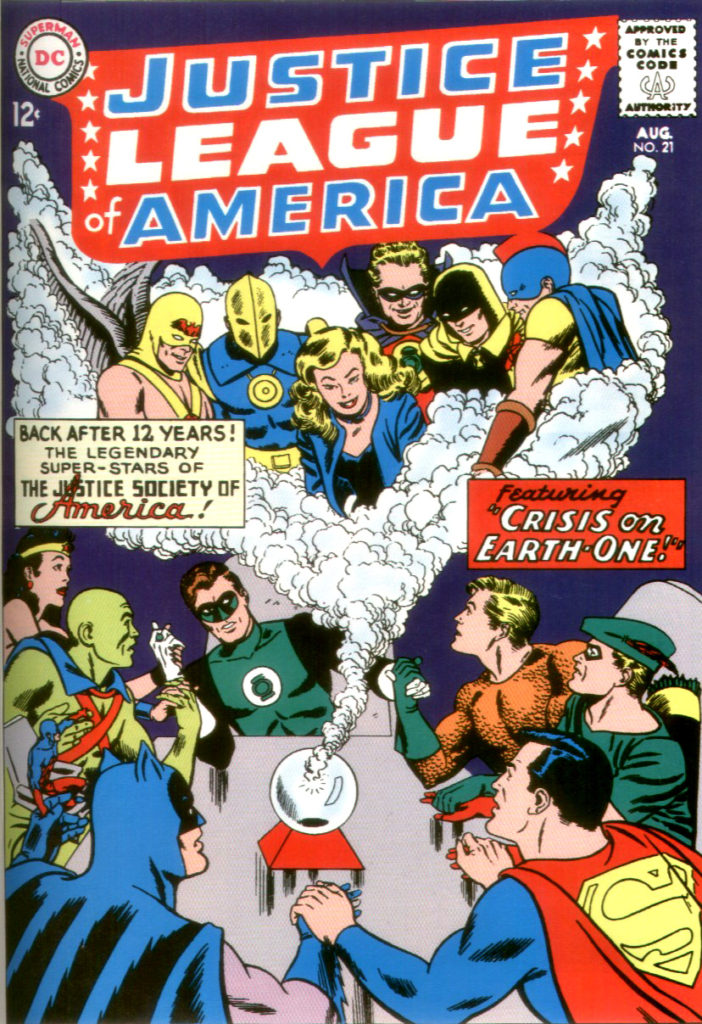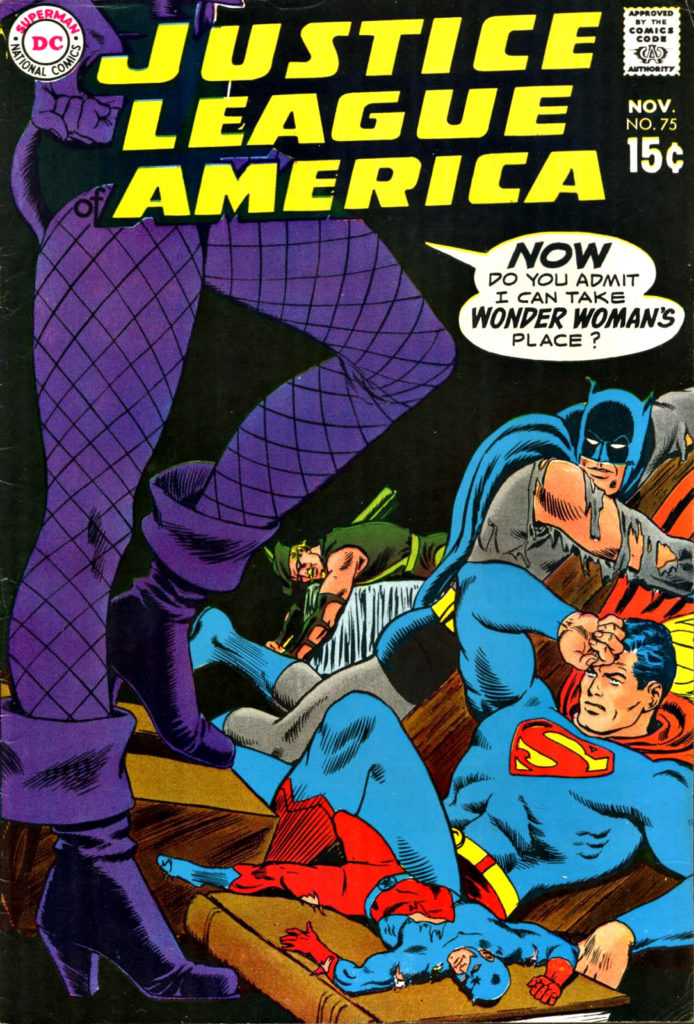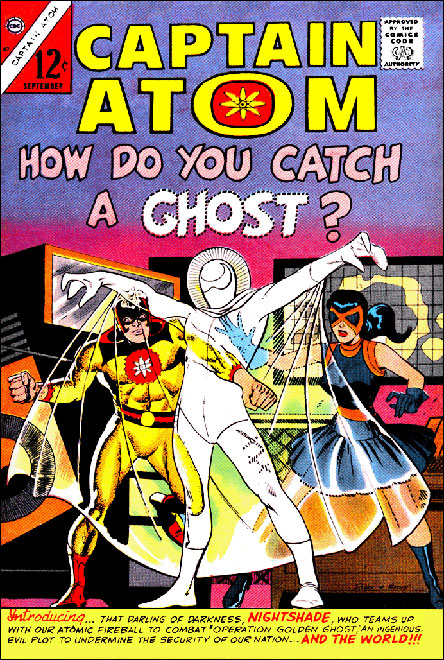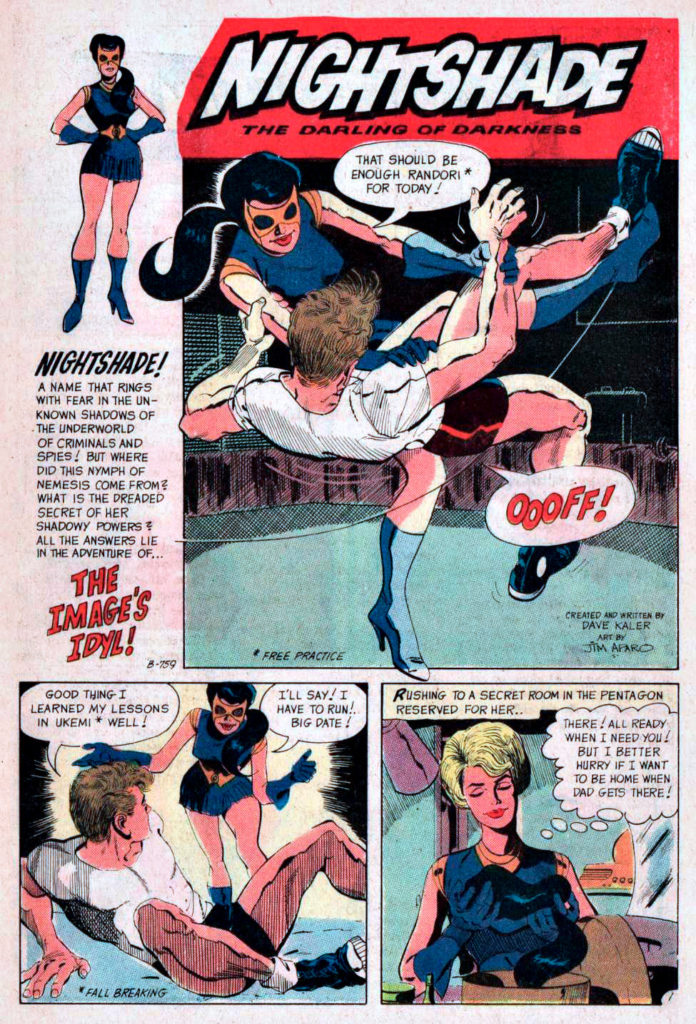Starman #44, July 1998
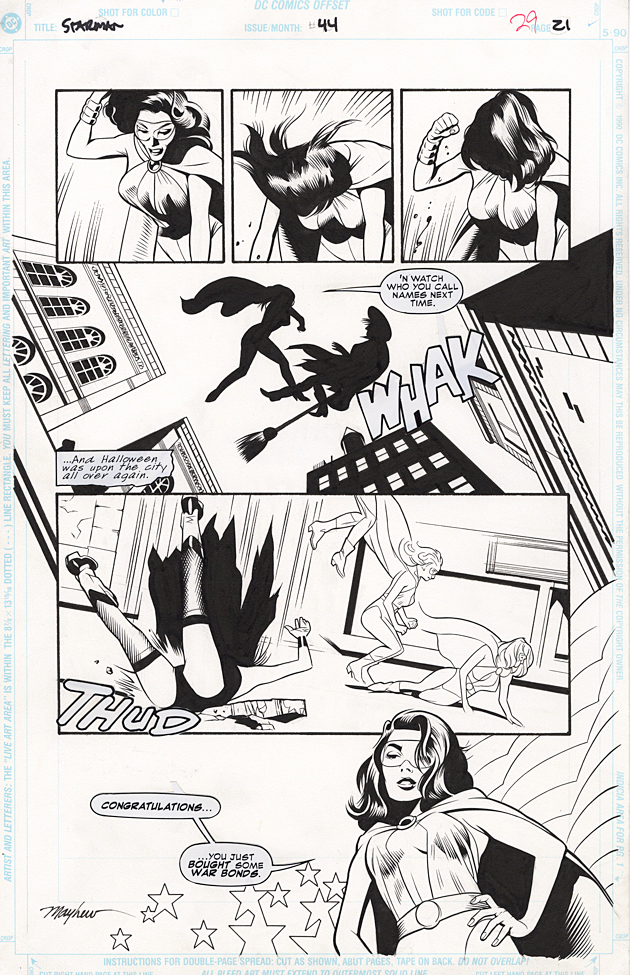
Continuing our series on the roots of the Watchmen characters.
Isn’t the Silk Spectre actually Nightshade, the only female superhero in the Charlton superhero line-up? After all, all the other main characters are derived from silver-age Charlton heroes.
Or, if not, perhaps she is an altered version of DC’s Black Canary, who, thanks to retconning, became a mother/daughter Golden Age/Silver Age legacy character?
What does Alan Moore say? He said at one time that she’s based on the Phantom Lady (Sandra Knight), created by the Eisner Iger studio in 1940, and first published by Quality Comics in 1940. (Moore says Nightshade was “boring.” I’m not sure what, if anything, he’s said about Black Canary.)
Phantom Lady had quite a few incarnations in the Golden Age, moving from publisher to publisher, ultimately becoming yet another casualty of the Golden Age.
She is perhaps best known for the cover of Fox Features issue #17 (by Matt Baker), prominently featured in Frederic Wertham’s infamous anti- comics tome Seduction of the Innocent as an example of titillation (costume) and sadism (bondage.)
She first appeared in the DC universe as part of the Freedom Fighters, a group of superheroes fighting Nazi domination of an alternate Earth (“X”), in Justice League #107 (October 1973.) The rest of the Freedom Fighters are also superheroes from Quality Comics — DC obtained Quality’s characters in 1956, but with the exception of Plastic Man, had kept the characters in limbo.
Between her multiple iterations and publishers in the Golden Age, and her (at least) four incarnations at DC, there are likely more versions of Phantom Lady than any other secondary character in comics history.
In this post-crisis version, she is retconned as Starman’s cousin, helping him fight crime in the “Golden Age.” In fact, this great action page by Mike Mayhew is from the classic James Robinson Starman series.
As for Charlton’s Nightshade? She can’t catch a break. She was briefly introduced as a partner for Captain Atom and received a short-lived back-up feature in his title just prior to its cancellation. Despite some fine early art by Jim Aparo, those stories have never been reprinted — other than public domain press.


